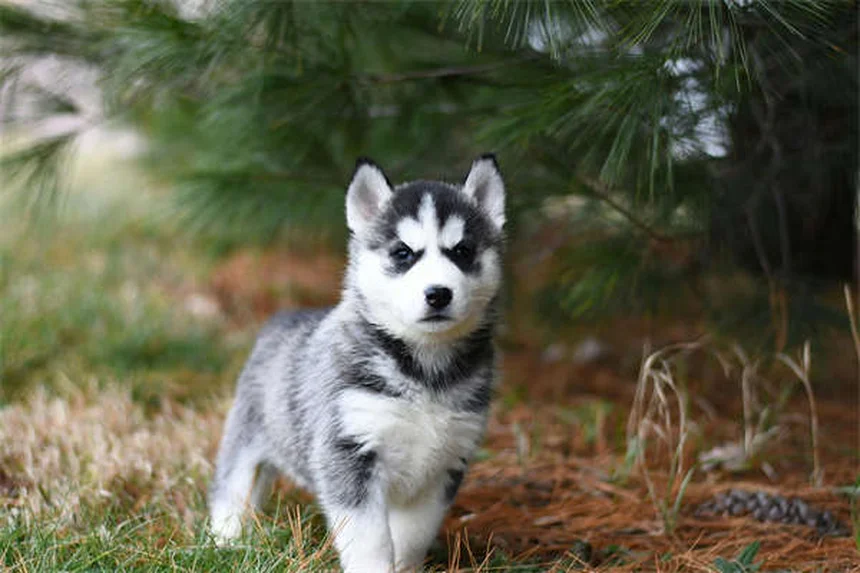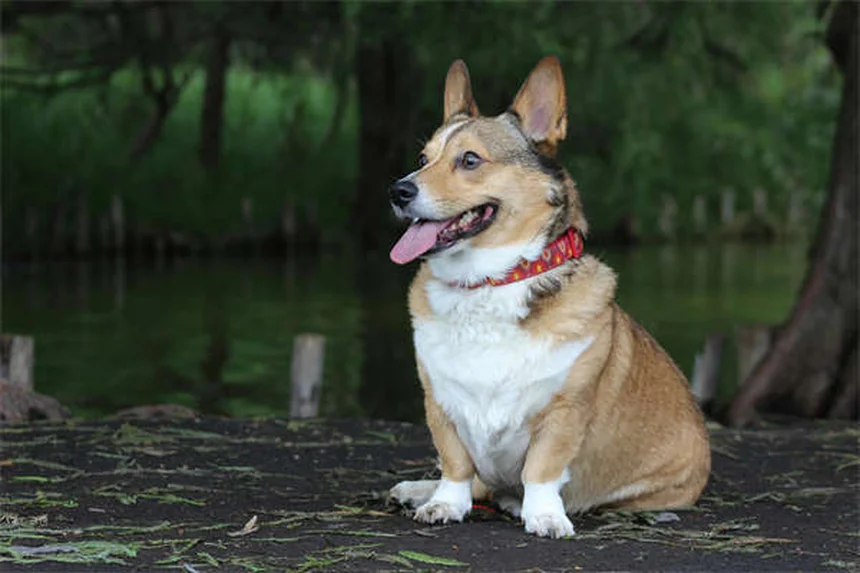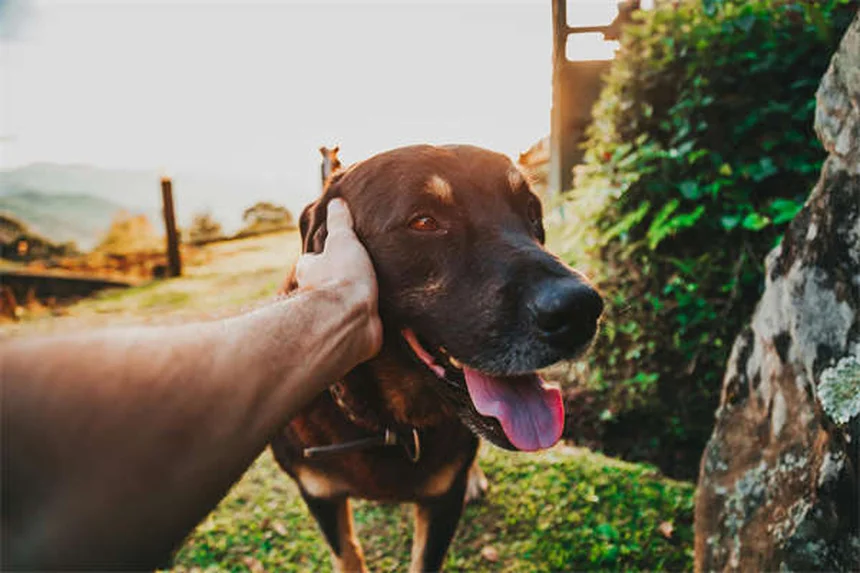How much should you feed your dog? The answer is: it depends on your dog's age, size, and activity level! I've been through this with my own dogs, and let me tell you - getting the portions right makes all the difference in their health and happiness. Overfeeding leads to obesity (which 59% of dogs struggle with), while underfeeding can cause nutritional deficiencies. But don't worry - with the right information, you can nail your dog's perfect portion size. In this guide, I'll walk you through everything from puppy feeding charts to senior dog nutrition, so you can keep your furry friend at their ideal weight.
E.g. :15 Heartfelt Ways to Memorialize Your Beloved Pet
- 1、Understanding Your Dog's Nutritional Needs
- 2、Decoding Dog Food Labels
- 3、Feeding Guidelines by Life Stage
- 4、Special Considerations
- 5、Feeding Frequency: How Often Should You Feed?
- 6、Making Feeding Time Work for You
- 7、The Hidden Dangers of Free-Feeding
- 8、The Truth About Dog Food Marketing
- 9、The Great Debate: Wet vs. Dry Food
- 10、The Human Food Question
- 11、Hydration: The Forgotten Nutrient
- 12、Reading Your Dog's Body Signals
- 13、Budget-Friendly Nutrition Tips
- 14、FAQs
Understanding Your Dog's Nutritional Needs
Why Portion Control Matters
Let me tell you something - feeding your dog isn't just about filling their bowl. It's about giving them the right amount of high-quality food to keep them healthy and happy. Think about it this way: would you eat the same portion size as your neighbor who's twice your size? Probably not!
Here's the deal - overfeeding leads to obesity, while underfeeding can cause nutritional deficiencies. I've seen too many well-meaning dog owners accidentally harm their pets by not paying attention to portion sizes. The good news? With some simple guidelines, you can get this right.
Factors That Affect Feeding Amounts
Did you know that a Chihuahua and a Great Dane have completely different nutritional needs? Here's what affects how much you should feed your furry friend:
- Age: Puppies need more calories and nutrients than adult dogs
- Size: Bigger dogs need more food (but not proportionally more!)
- Activity level: That Labrador who fetches balls all day needs extra fuel
- Reproductive status: Spayed/neutered dogs need fewer calories
- Body condition: Overweight dogs need less, underweight dogs need more
Here's a funny thought - my neighbor's couch potato Bulldog needs way less food than my sister's Border Collie who herds sheep all day. Same species, completely different lifestyles!
Decoding Dog Food Labels
 Photos provided by pixabay
Photos provided by pixabay
Where to Find Reliable Information
Ever feel confused by all the numbers on dog food packages? You're not alone! The best place to start is right on the bag or can of your dog's food. Manufacturers include feeding charts that are specific to their product.
But here's a pro tip: these charts are just starting points. Your dog might need 25% more or less than what's recommended. Why? Because every dog is unique - just like people!
When to Consult Your Vet
Have you noticed your dog gaining or losing weight unexpectedly? That's when it's time to call your vet. They can help you adjust portions based on:
- Your dog's ideal weight (not necessarily current weight)
- Any health conditions
- Changes in activity level
Remember that time my dog started gaining weight after we moved to an apartment? Our vet helped us adjust his portions to match his new, less active lifestyle.
Feeding Guidelines by Life Stage
Adult Dogs: The Simple Ones
Adult dogs are the easiest to feed because their needs stay relatively consistent. The key factor? Their ideal weight. Here's a sample feeding chart for a typical adult dog food (about 379 kcal per cup):
| Weight Range | Daily Amount |
|---|---|
| 3-12 lbs | ½-1¼ cups |
| 13-20 lbs | 1¼-1⅔ cups |
| 21-35 lbs | 1⅔-2⅓ cups |
| 36-50 lbs | 2⅓-3 cups |
| 51-75 lbs | 3-3¾ cups |
| 76-100 lbs | 4-4⅔ cups |
| 100+ lbs | 4⅔ cups + ⅓ cup per 10 lbs over 100 |
Notice how the amounts don't increase proportionally with weight? That's because metabolism works differently at different sizes!
 Photos provided by pixabay
Photos provided by pixabay
Where to Find Reliable Information
Puppies are like tiny eating machines - they need more calories per pound than adult dogs. But here's the catch: their needs change rapidly as they grow.
Check out this puppy feeding chart for Blue Buffalo Wilderness:
| Weight | 1-3 Months | 3-5 Months | 5-7 Months | 7-12 Months |
|---|---|---|---|---|
| Up to 5 lbs | ½-1 cup | ½-¾ cup | ¼-½ cup | ¼-½ cup |
| 6-10 lbs | 1-1½ cups | ¾-1 cup | ½-1 cup | ½-¾ cup |
| 11-20 lbs | 1½-2½ cups | 1-1¾ cups | 1-1½ cups | ¾-1¼ cups |
See how the amounts decrease as puppies get older? That's because their growth slows down. It's like how human teenagers eventually stop eating everything in sight!
Special Considerations
Senior Dogs: Golden Years Nutrition
When does a dog become a senior? It depends on their size:
- Giant breeds: 7 years
- Large breeds: 8 years
- Medium breeds: 10 years
- Small breeds: 11 years
- Toy breeds: 12 years
Senior dog foods often have fewer calories but added nutrients for joint health and digestion. Here's a sample senior feeding guide:
| Weight Range | Daily Amount |
|---|---|
| 18-23 lbs | 1-1⅓ cups |
| 24-45 lbs | 1⅓-2¼ cups |
| 46-65 lbs | 2⅓-3 cups |
Overweight Dogs: Time for a Change
Did you know that 59% of dogs are overweight? That's more than half! Extra weight can lead to serious health problems like joint disease, heart issues, and even cancer.
If your dog needs to lose weight, consider:
- Special weight management foods
- Measuring portions carefully
- Increasing exercise gradually
My cousin's Beagle lost 5 pounds (that's like a human losing 30!) just by switching to measured meals instead of free-feeding.
Feeding Frequency: How Often Should You Feed?
 Photos provided by pixabay
Photos provided by pixabay
Where to Find Reliable Information
Puppies have tiny tummies but big energy needs. Here's how often they should eat:
- Toy breeds: 4-5 meals/day until 4 months, then 3 meals until 6 months
- Other sizes: 3 meals/day until 4 months
Adult Dog Feeding Schedule
Most adult dogs do best with two meals per day. But large breeds might need three smaller meals to prevent bloat.
Here's a question: Why shouldn't you feed your dog just once a day? Because it can lead to hunger spikes and overeating at mealtime!
Making Feeding Time Work for You
Practical Tips for Busy Owners
Let's face it - we're all busy. Here are some ways to make dog feeding easier:
- Use a measuring cup (not just any cup from your cupboard)
- Consider automatic feeders if you're away at mealtimes
- Split the daily amount into appropriate meals
I use a special container with daily portions measured out - it saves me time in the morning rush!
When to Adjust Portions
Keep an eye out for these signs that your dog's portions need adjusting:
- Weight gain/loss
- Changes in activity level
- Different life stages (puppy to adult, adult to senior)
Remember, feeding your dog right is one of the best ways to show your love. It might take some trial and error, but seeing your healthy, happy dog makes it all worthwhile!
The Hidden Dangers of Free-Feeding
Why Scheduled Meals Beat All-Day Buffets
You might think leaving food out all day is convenient, but let me share why that's a recipe for trouble. Free-feeding often leads to weight gain because dogs, like humans, tend to eat when food is available - not just when they're hungry.
Here's something interesting - dogs actually thrive on routine. When you feed them at consistent times, their digestion improves and they develop better eating habits. My neighbor's Golden Retriever used to graze all day until they switched to scheduled feedings - now he's at a healthy weight and actually gets excited for mealtime!
The Behavioral Benefits of Meal Structure
Ever notice how dogs beg for food constantly? That's often because they've learned food is always available. Scheduled feedings create clear boundaries and reduce begging behaviors.
Think about this - would you rather have a dog who politely waits for meals or one who's constantly underfoot when you're cooking? Training your dog to understand meal times makes life easier for everyone in the household.
The Truth About Dog Food Marketing
Deciphering Buzzwords on Packaging
"Grain-free," "holistic," "premium" - these terms sound impressive, but what do they really mean? The truth is, many are just marketing tactics with no regulated definitions.
Here's a reality check - the most expensive food isn't necessarily the best for your dog. I once spent a fortune on "gourmet" dog food only to discover my pup did better on a simpler, less expensive brand recommended by our vet.
Understanding AAFCO Statements
This is where things get important - look for the AAFCO (Association of American Feed Control Officials) statement on the package. It tells you if the food meets minimum nutritional requirements.
Did you know that some foods labeled "complete and balanced" might only meet standards for adult maintenance, not for all life stages? Always check that the food matches your dog's current needs.
The Great Debate: Wet vs. Dry Food
Pros and Cons of Each Option
Let's break down this common dilemma. Dry food is convenient and helps clean teeth, while wet food provides more moisture and often appeals to picky eaters.
| Factor | Dry Food | Wet Food |
|---|---|---|
| Cost | Generally less expensive | More expensive per serving |
| Dental Benefits | Helps scrape plaque | No dental benefits |
| Moisture Content | About 10% | About 75% |
| Shelf Life | Long (months) | Short (days after opening) |
Here's a tip from my experience - mixing a little wet food with dry can give you the best of both worlds. My dog goes crazy for this combo!
Special Cases Where Wet Food Shines
Some situations call for wet food's advantages. Senior dogs with dental issues, puppies being weaned, or dogs recovering from illness often benefit from the softer texture and higher moisture content.
Remember my friend's elderly Dachshund who stopped eating? Switching to wet food got her interested in meals again and helped with her hydration too.
The Human Food Question
Safe vs. Dangerous People Foods
We've all been tempted to share our snacks, but knowing which human foods are safe is crucial. Some surprising items like grapes and xylitol (found in sugar-free gum) can be deadly.
Here's a quick reference of common foods:
| Safe | Dangerous |
|---|---|
| Plain cooked chicken | Chocolate |
| Carrots | Onions |
| Blueberries | Avocado |
| Plain popcorn | Alcohol |
I keep this list on my fridge - it's saved me from making some potentially dangerous mistakes!
Healthy Treat Alternatives
Instead of sharing your pizza crust, try these vet-approved snacks: frozen green beans, small pieces of apple (no seeds!), or plain yogurt. These options provide nutrients without the risks.
My dog's favorite? Frozen banana slices - they're like puppy popsicles on hot days!
Hydration: The Forgotten Nutrient
How Much Water Does Your Dog Need?
We focus so much on food that we often forget about water. A good rule of thumb is that dogs need about 1 ounce of water per pound of body weight daily.
But here's something many owners don't realize - dogs eating wet food get much of their hydration from their meals, while dry food eaters need to drink more water.
Encouraging Proper Hydration
Some dogs are naturally bad drinkers. Try these tricks: add water to dry food, use a pet water fountain (many dogs prefer running water), or place multiple water bowls around your home.
When my dog wasn't drinking enough, our vet suggested adding a splash of low-sodium chicken broth to his water - problem solved!
Reading Your Dog's Body Signals
Signs of Proper Nutrition
A well-fed dog has clear eyes, a shiny coat, good energy levels, and firm (not too hard or soft) stools. These are signs you've got the feeding right.
Ever notice how some dogs just glow with health? That's often the result of proper nutrition tailored to their individual needs.
Warning Signs of Dietary Issues
Watch for these red flags: dull coat, excessive shedding, weight changes, digestive upset, or changes in energy levels. These could indicate your dog's food isn't agreeing with them.
My sister's Boxer started scratching constantly - turns out he had a food sensitivity. After switching proteins, his skin cleared right up!
Budget-Friendly Nutrition Tips
Getting More Value Without Sacrificing Quality
Good dog food doesn't have to break the bank. Look for sales, buy in bulk (if you can use it before expiration), and consider store brands that meet AAFCO standards.
Here's a money-saving trick I learned - many pet stores offer frequent buyer programs where your 10th bag is free. It adds up!
When to Splurge and When to Save
Invest in high-quality food for puppies, seniors, and dogs with health issues. Healthy adult dogs often do fine on mid-range options that still meet all nutritional requirements.
Remember - spending more on quality food now might save you vet bills later. It's like the old saying: "An ounce of prevention is worth a pound of cure."
E.g. :Dog Feeding Chart: How Much Food Should I Feed My Dog? | PetMD
FAQs
Q: How do I know if I'm feeding my dog the right amount?
A: The best way to know if you're feeding your dog the right amount is to check their body condition and weight. Here's what I look for in my own dogs: you should be able to feel (but not see) their ribs, they should have a visible waist when viewed from above, and their belly should tuck up when viewed from the side. The feeding charts on your dog food bag are great starting points, but remember - every dog is different! My neighbor's lazy Bulldog needs way less food than my sister's active Border Collie, even though they weigh about the same.
Q: How often should I feed my adult dog?
A: Most adult dogs do best with two meals per day, but it depends on their size. Here's what I recommend based on my experience: small and medium breeds typically do well with two meals, while large and giant breeds might need three smaller meals to prevent bloat (a serious condition). Toy breeds sometimes need more frequent meals too because they have faster metabolisms. The key is to divide their total daily food amount into these meals - don't just give them full portions each time!
Q: Why does my puppy need to eat more often than my adult dog?
A: Puppies need more frequent meals because they're growing rapidly and have smaller stomachs. Think about it like this - their little bodies are building bones, muscles, and everything else at an incredible rate! I remember when my Labrador puppy was young - he needed three meals a day until he was about six months old. Toy breed puppies might need four or even five small meals a day at first. As they grow, you can gradually reduce the number of meals while increasing the portion size at each feeding.
Q: When should I switch my dog to senior food?
A: The right time to switch to senior food depends on your dog's size. Here's the general rule I follow: giant breeds (like Great Danes) are seniors at about 7 years, large breeds at 8, medium breeds at 10, small breeds at 11, and toy breeds at 12. But it's not just about age - if your dog is slowing down, gaining weight easily, or showing signs of aging, it might be time to switch. I made the switch for my Beagle at 11, and the lower-calorie senior food helped him maintain a healthy weight.
Q: What should I do if my dog is overweight?
A: If your dog is overweight, here's what's worked for me and my vet recommends: first, measure their food carefully (no eyeballing!), then consider switching to a weight management formula. Increasing exercise helps too, but do it gradually. For serious weight issues, your vet might recommend a prescription diet. I helped my cousin's Beagle lose 5 pounds (a huge amount for a small dog!) by measuring his food and cutting out table scraps. Remember - even a little extra weight can cause big health problems!


